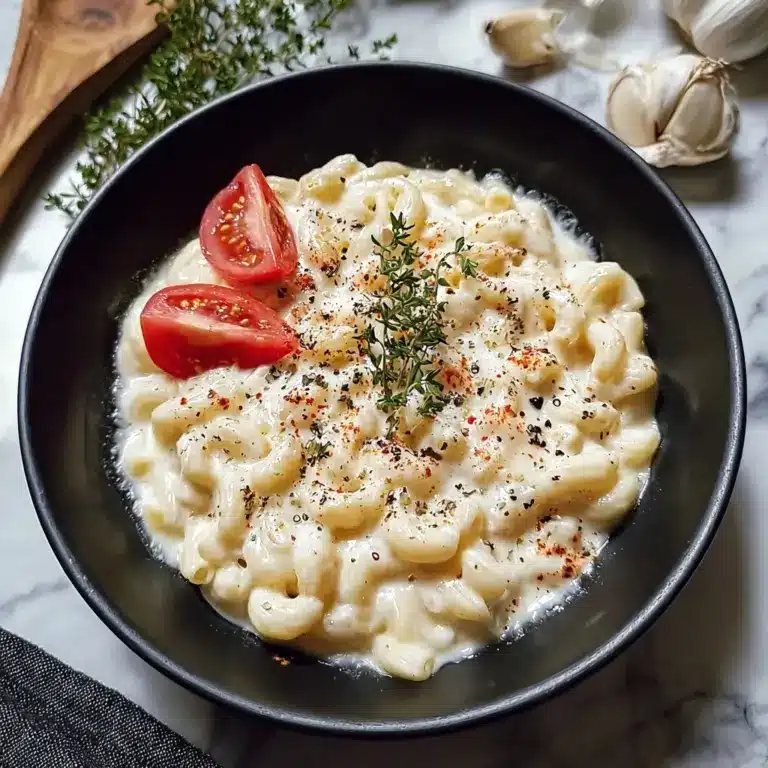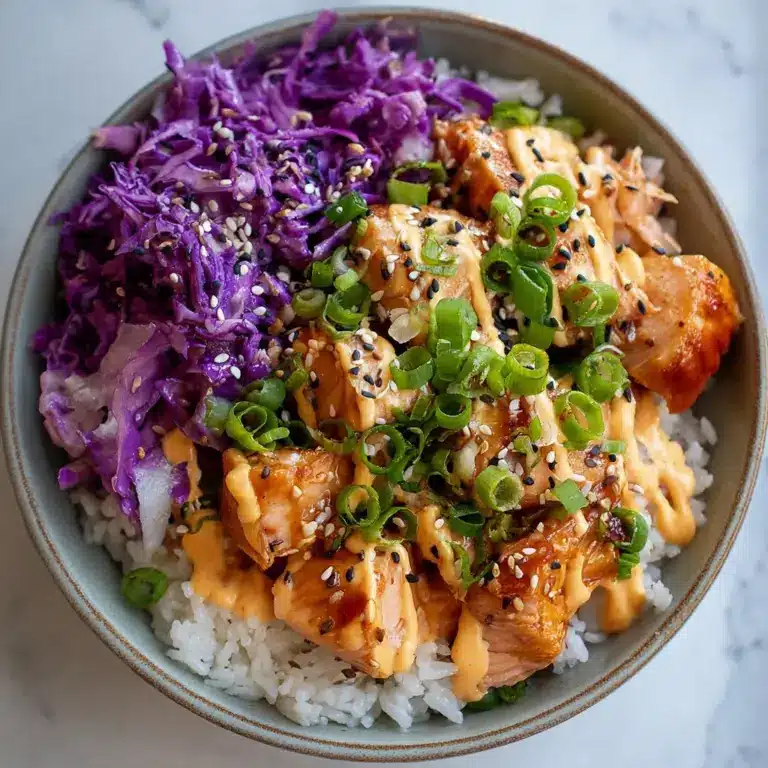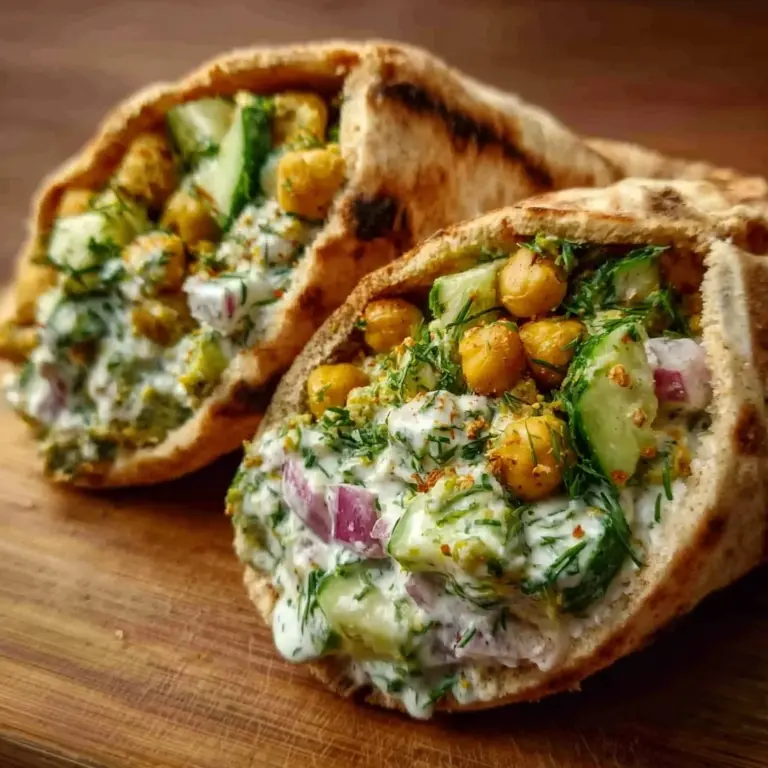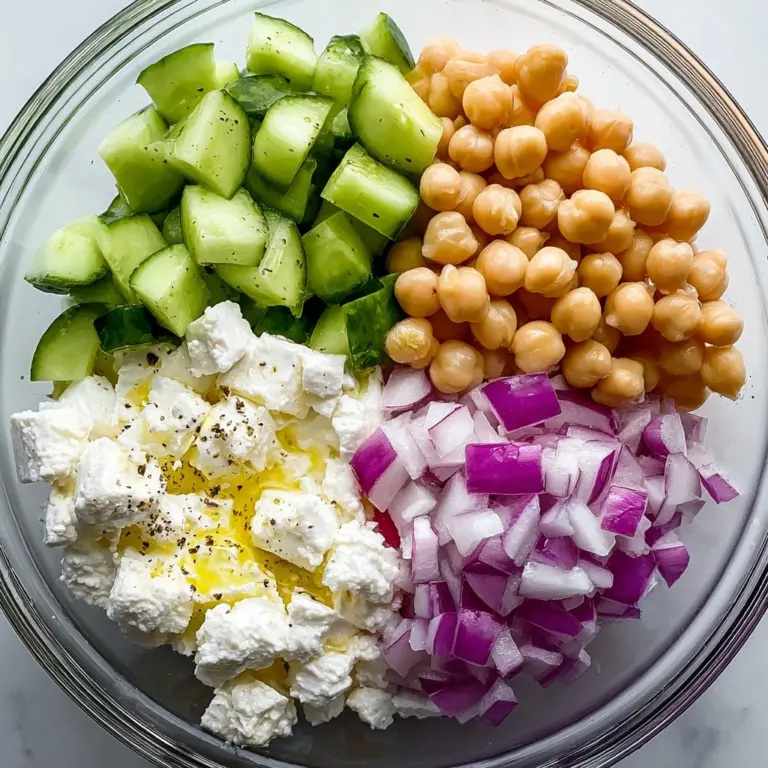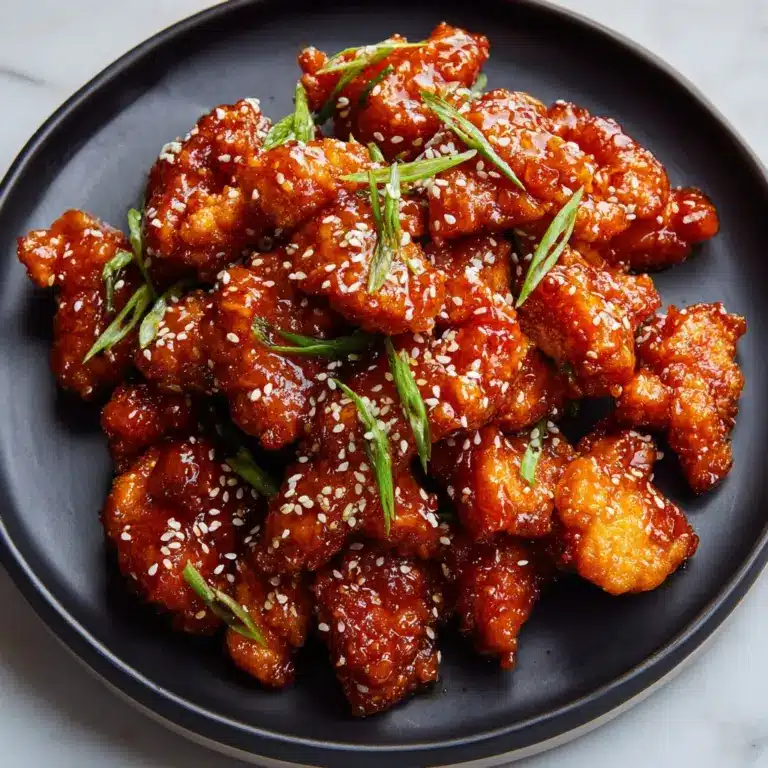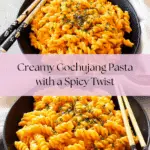Gochujang Pasta Recipe
If you’re ready to shake up your pasta routine with a bold, spicy twist, Gochujang Pasta deserves a starring role on your dinner table. This irresistible Korean-Italian fusion dish takes the savory depth of gochujang (Korean red chili paste) and whirls it together with a velvety, creamy sauce that clings to every twirl of pasta. The result is rich, vibrant, and just the right kind of spicy—perfect for anyone who loves a comforting bowl of noodles with a little bit of adventure. Whether it’s weeknight dining or you’re out to impress some foodie friends, there’s simply nothing like Gochujang Pasta to make both your tastebuds and your guests happy.
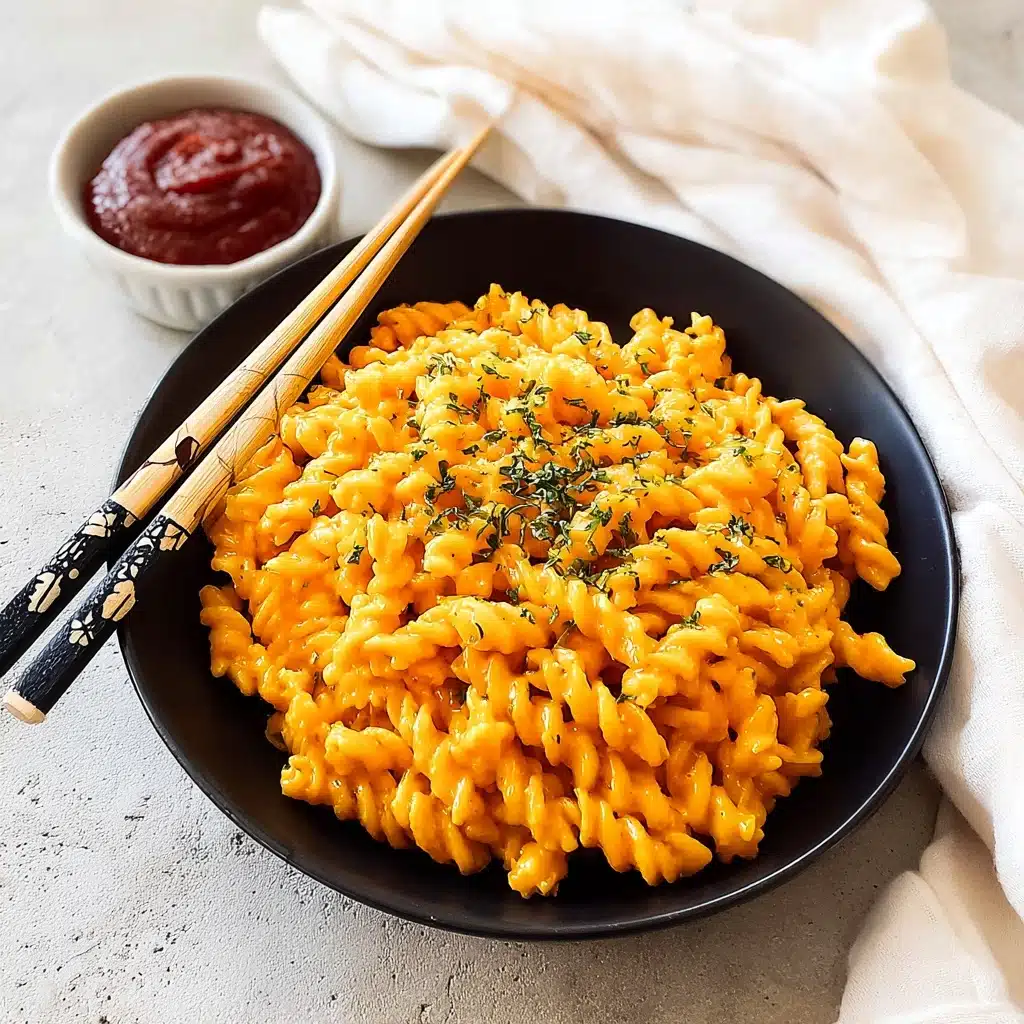
Ingredients You’ll Need
Every ingredient in Gochujang Pasta plays a starring role, creating layers of flavor that are far more than the sum of their parts. Most are pantry staples, but together, they create magic—each lending its own texture, creaminess, or savory bite.
- Pasta: Fusilli Corti Bucati or Bucatini—these noodle shapes hold onto every drop of sauce, but feel free to use your favorite kind.
- Gochujang: Korean red chili pepper paste is the heart and soul of this dish, providing depth and signature heat.
- Garlic: Adds fragrant, punchy warmth that beautifully rounds out the sauce.
- Salted Butter: Brings luscious richness and a silky finish to every bite.
- Olive Oil: Helps sauté the garlic evenly and adds another layer of taste.
- Parmesan or Cheddar Cheese: Adds salty, melty goodness—choose according to your mood for flavor intensity.
- Heavy Cream: Makes the sauce extra creamy, yielding that luxurious texture.
- Freshly Ground Black Pepper (optional): A finishing touch for those who like a subtle kick and complexity.
- Chopped Parsley (optional garnish): Adds a burst of green and a pop of freshness right before serving.
How to Make Gochujang Pasta
Step 1: Boil the Pasta
Fill a large pot with water and bring it to a rolling boil—don’t forget to salt the water generously! This is your only chance to season the pasta itself, and it makes a world of difference. Once boiling, add your chosen pasta shape and cook it according to the package instructions (usually 7–12 minutes), until just al dente.
Step 2: Prep and Sauté the Aromatics
While the pasta cooks, place a sauté pan over medium heat and add the butter and olive oil. The moment the butter melts and starts to bubble, stir in the minced garlic (and black pepper if using). Keep a close eye—garlic goes from fragrant to burnt in a flash! Let it sizzle for 30–60 seconds until your kitchen smells amazing.
Step 3: Whip Up the Gochujang Pasta Cream Sauce
Add the star ingredient—gochujang—straight into your pan, followed by the heavy cream and shredded cheese. Stir and let everything come together for 1–2 minutes. The sauce should turn enticingly glossy and slightly thickened, marrying creamy richness with the deep, savory heat of the chili paste.
Step 4: Combine Pasta and Sauce
Once your pasta is cooked and drained, add it right into the pan with your simmering sauce. Toss or stir well so every noodle is utterly coated. Give it a moment on the heat to help the flavors marry—your tastebuds will thank you.
Step 5: Garnish and Serve
Turn off the heat, plate your Gochujang Pasta, and sprinkle generously with chopped fresh parsley. That final green touch makes every serving pop and adds a welcome hint of brightness. Dive in while it’s hot and creamy!
How to Serve Gochujang Pasta
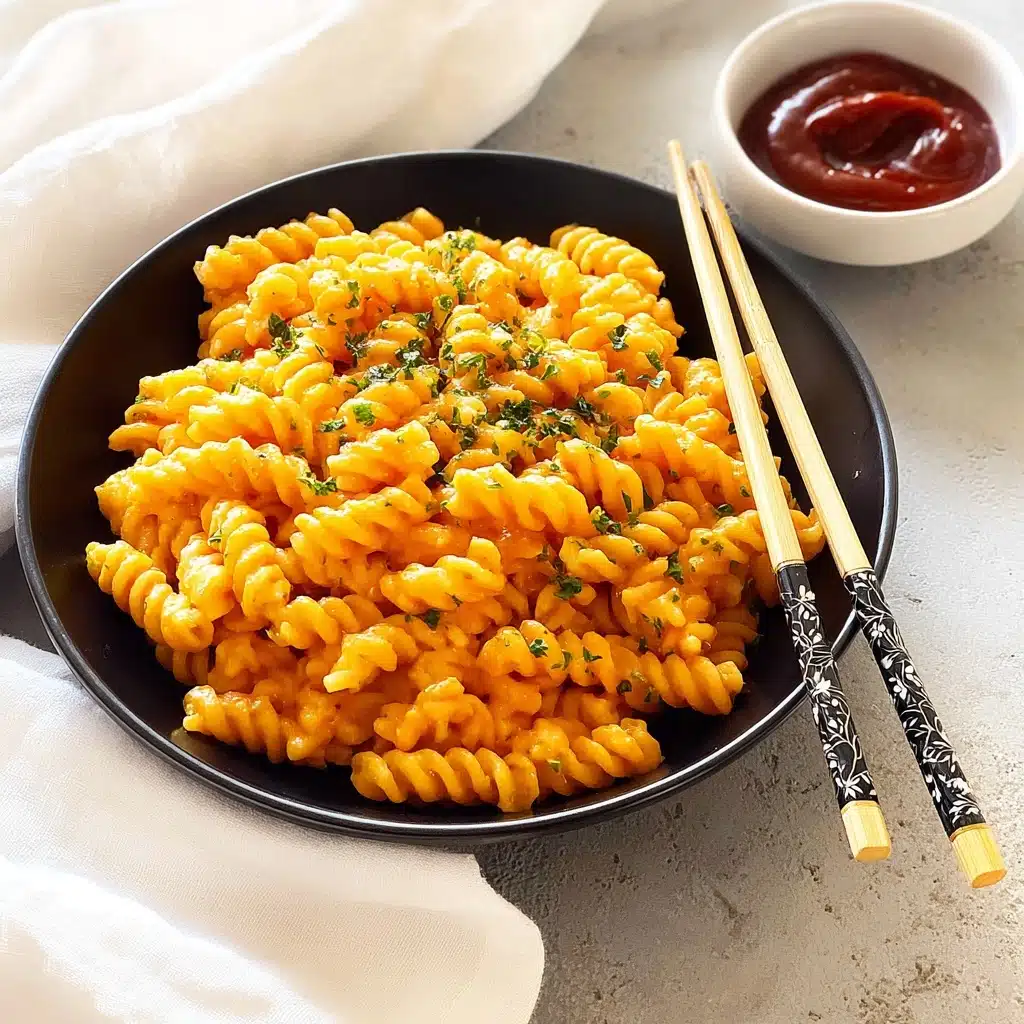
Garnishes
Slice a few scallions thin and sprinkle them over the top for a gentle oniony crunch. A handful of toasted sesame seeds or an extra dusting of parmesan or cheddar can make all the difference, both visually and taste-wise. If you want more heat, a few red pepper flakes sprinkled on top will never disappoint.
Side Dishes
Gochujang Pasta is bold and satisfying all on its own, but a crisp green salad tossed with a zippy vinaigrette is a fantastic pairing. Roasted or steamed vegetables also complement the creamy, spicy sauce beautifully—think blistered green beans or honey-glazed carrots. A side of garlic bread? Absolutely encouraged!
Creative Ways to Present
Want to impress? Twirl a serving of pasta into a nest on each plate for restaurant-style flair, then top with your prettiest parsley leaves. Or serve the pasta in small bowls as a zesty side at a potluck or shared meal. Gochujang Pasta also shines tucked into a lunchbox with some crunchy pickled veggies on the side!
Make Ahead and Storage
Storing Leftovers
If you find yourself with extra Gochujang Pasta (lucky you!), stash it in an airtight container once fully cooled. It will keep well in the fridge for up to 3 days. The sauce may thicken as it sits, but the flavor deepens beautifully.
Freezing
While creamy sauces can sometimes separate after thawing, you can freeze Gochujang Pasta if needed. Store in a microwave-safe container, and be sure to let it cool completely before freezing. For best results, reheat gently and be ready to add a splash of water or cream to restore the silky texture.
Reheating
Warm leftovers in a saucepan over low heat, stirring frequently and adding a little cream or milk if the sauce seems too thick. You can also use the microwave—just cover the container and use short bursts, stirring each time to reintroduce creaminess.
FAQs
Is Gochujang Pasta very spicy?
It has a pleasant, warming heat, but it’s not overwhelming for most palates. If you’re sensitive to spice, use a bit less gochujang and taste as you go—it’s easy to adjust!
Can I use a different type of cheese?
Absolutely! Both parmesan and cheddar work well, but mozzarella or even a mild gouda would melt beautifully and add their own flavor twist. Use what you love or have on hand.
What protein can I add to Gochujang Pasta?
Grilled chicken, shrimp, or crispy tofu are perfect choices. Simply cook your protein separately and toss it in with the finished pasta for an extra-filling meal.
Does the recipe work with gluten-free or whole-wheat pasta?
Yes, you can use any pasta you like! Gochujang Pasta is flexible—just be sure to cook your noodle of choice according to the package instructions so it’s perfectly al dente.
Where can I buy gochujang and how should I store it?
Look for gochujang in the international aisle of most grocery stores, at Asian supermarkets, or online. Store opened gochujang in the fridge, tightly sealed, and it will keep for several months.
Final Thoughts
If you’re looking to break free from the usual pasta night and surprise yourself (and your guests) with something truly memorable, Gochujang Pasta more than delivers. It’s a dish that layers creamy comfort with an irresistible, spicy-sweet depth you’ll want to revisit again and again. Don’t wait—grab these simple ingredients and let your next meal be a delicious adventure!
Print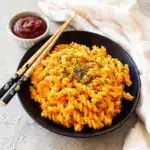
Gochujang Pasta Recipe
- Total Time: 30 minutes
- Yield: 4 servings 1x
- Diet: Vegetarian
Description
This Gochujang Pasta recipe combines the spicy, umami flavors of Korean Gochujang with creamy pasta for a delicious fusion dish.
Ingredients
Pasta:
- 8 oz dry Fusilli Corti Bucati Pasta (or any pasta shape)
Gochujang Pasta Cream Sauce:
- 2 tablespoons Gochujang
- 3 cloves garlic, minced or pressed
- 4 tablespoons salted butter
- 2 tablespoons olive oil
- 1/2 cup shredded parmesan or cheddar cheese
- 1/2 cup heavy cream
- 1/2 teaspoon freshly ground black pepper (optional)
- 2 teaspoons chopped parsley (optional garnish)
Instructions
- Pasta Preparation: Bring water to a rolling boil. Salt water (optional).
- Gochujang Pasta Cream Sauce: Add butter and olive oil to a sauté pan over medium heat. Cook garlic (and optional black pepper) for 30-60 seconds until fragrant. Add Gochujang, heavy cream, and cheese. Cook for 1-2 minutes until slightly thickened.
- Add cooked pasta, stir to combine.
- Transfer to a plate, garnish with parsley, and enjoy!
Add pasta and cook for 7-12 minutes or until desired texture. Strain and set aside.
- Prep Time: 15 minutes
- Cook Time: 15 minutes
- Category: Main Dish
- Method: Stovetop
- Cuisine: Korean Fusion
Nutrition
- Serving Size: 1 serving
- Calories: 590 kcal
- Sugar: 2g
- Sodium: 570mg
- Fat: 37g
- Saturated Fat: 20g
- Unsaturated Fat: 14g
- Trans Fat: 1g
- Carbohydrates: 50g
- Fiber: 3g
- Protein: 14g
- Cholesterol: 90mg
Keywords: Gochujang Pasta, Korean pasta, spicy pasta, fusion recipe

